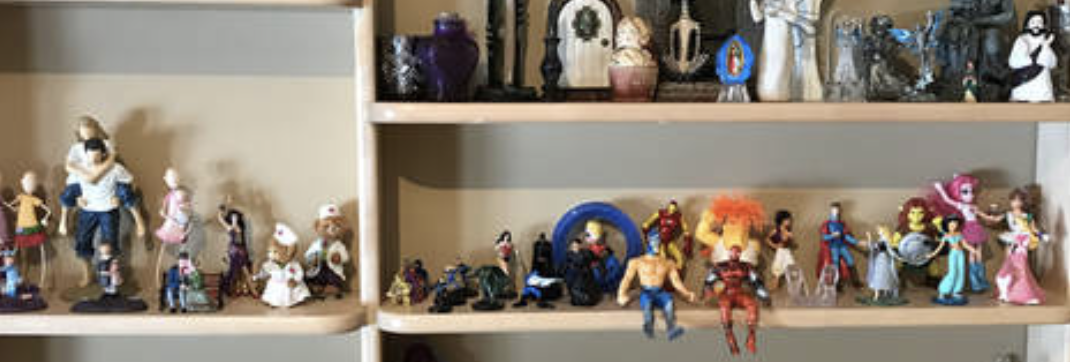|
COGNITIVE BEHAVIORAL THERAPY (CBT)
Definition: CBT is a structured, time limited, problem-focused and goal oriented form of psychotherapy. CBT helps people learn to identify, challenge and change unhelpful thoughts and beliefs that serve to maintain their depression and/or anxiety. How it works: CBT helps people understand the connection between their thoughts, emotions and behaviors. It is a collaborative and active approach. Treatment for common mental health issues teach people how to change behaviors that keep the problem going. Participants: Adults 24+ & Children under 11 For the treatment of: *Depression * Generalized Anxiety * Post Traumatic Stress Disorder * Health Anxiety * Social Anxiety * Obsessive - Compulsive Disorder * Panic Disorder |
ART THERAPY
Definition: "Art Therapy is an integrative mental health profession that enriches the lives of individuals and families through active art-making, creative process, applied psychological theory, and human experience, within a psychotherapeutic relationship." (© 2017 American Art Therapy Association, Inc. All Rights Reserved) How it works: Art therapy combines the creative visual art process and psychotherapy, encouraging and providing opportunities for self-exploration, self-expression and understanding. Art therapy offers a means of expressing and sharing thoughts and feelings that would otherwise be difficult to articulate. Traumas and difficult experiences can rob people of their sense of safety, which is often experienced as rigidity in thinking and emotions. Art Therapy can help reconnect people to a more flexible and creative state, allowing for more effective ways to solve problems and engage with life. Participants need not have artistic skills. Participants: Adults 24+ & Children under 11 and groups For the treatment of: Adults: *Grief and bereavement *Trauma or Post Traumatic Stress Disorder (PTSD) *Addictions or substance use issues *Physical health conditions/Chronic illness *Depression, anxiety and mental health issues *Relationship Issues *Parenting Issues *Caregiver Stress *Employment Stress *Aging issues Children & Youth *Anxiety and stress *Behavioural problems *Adjustment to major life changes *Depression *Grief and loss *Bullying *Attachment difficulties *Dealing with sibling or family dynamics *Identity exploration *Substance use |
SANDTRAY +
Definition: Sandtray therapy, one of the creative art therapies, is a psycho-therapeutic tool used with children and adults. The method consists of the client's creation of a three-dimensional "picture" with miniature figures and objects in a tray of sand. The scene created acts as a reflection of the person’s own life and allows him or her the opportunity to reflect, recognize patterns and behaviors that no longer serve a positive purpose in their life, resolve conflicts, remove obstacles, and gain acceptance of self. Through creative expression, a person in therapy is able to manifest in the sand the things they would otherwise not be able to put into words or address in traditional talk therapy. The therapist treats the person as whole, knowing that the process of sand tray therapy allows the person to find the answers that are already within them. Sandtray with Adults Although sandtray therapy may look like child’s play, it is a highly therapeutic and multidimensional form of therapy that can provide emotional release and realization for a person in therapy. Adults who have been traumatized and show limited response to other forms of therapy may respond well to sandtray therapy. Sandtray and Play Therapy with Children Many children are unable to verbalize emotional states, particularly in the face of trauma, neglect, or abuse. The non-verbal nature of sandtray therapy and the familiar medium of sand can help children achieve feelings of comfort and security. Like all forms of play therapy, sandtray offer children the opportunity to explore their lives and freely express thoughts and emotions through play. The therapist observes the child’s choices, decisions, and play style with the goal of helping the child learn to express themselves in healthier ways, become more respectful and empathetic, and discover new and more positive ways to solve problems. As children can feel highly anxious when they come to therapy, this relaxed and interactive type of play can help provide the safety that they need to move toward healing. Participants: Children under 11 & Adults 24+ For the treatment of: See art therapy |
Which therapy is for me?
I will work collaboratively with you to choose the therapeutic approach that best meets your needs, based on what clinical research tells us about what is most effective and taking into consideration your personal preference and my expertise.


